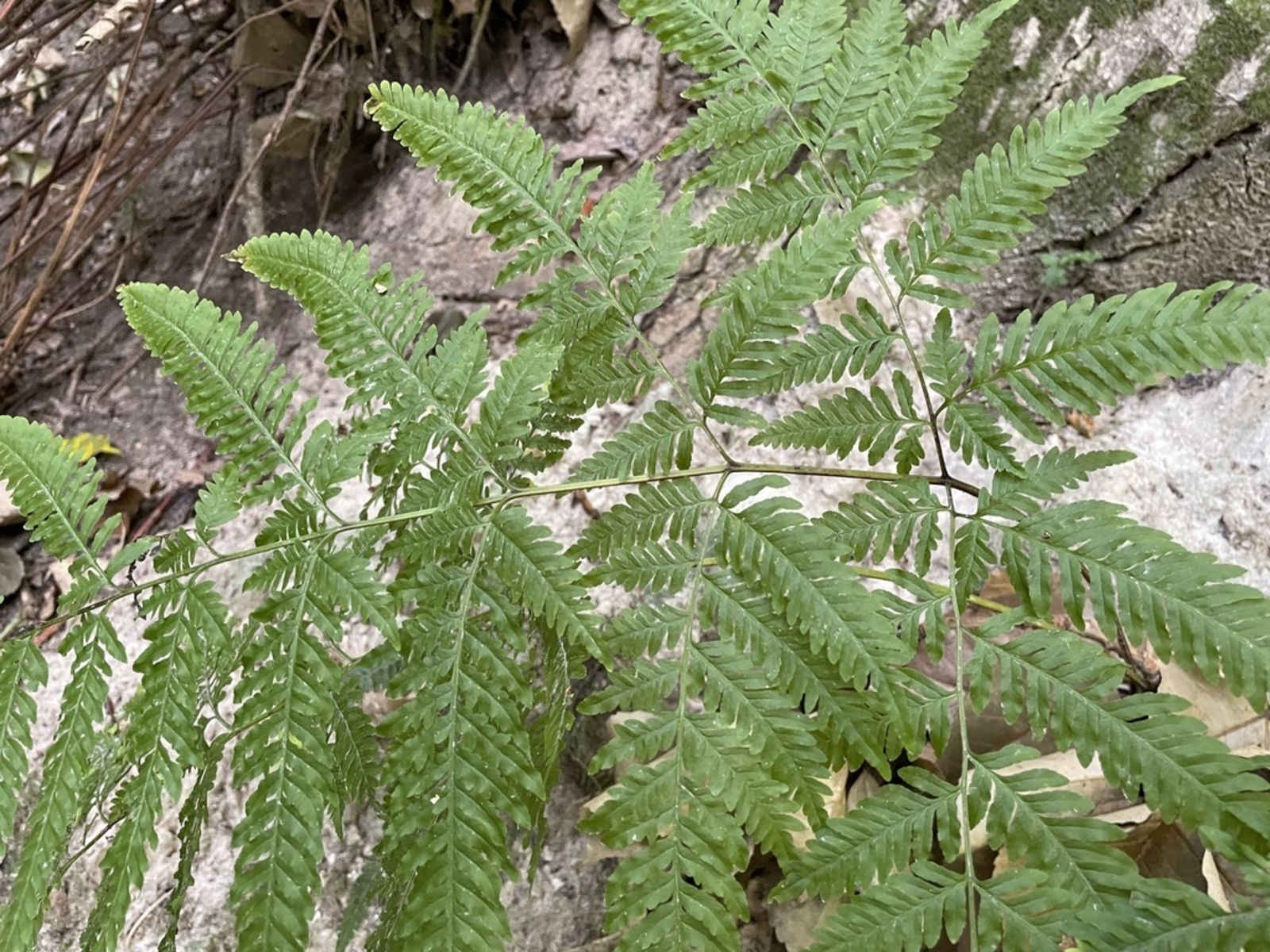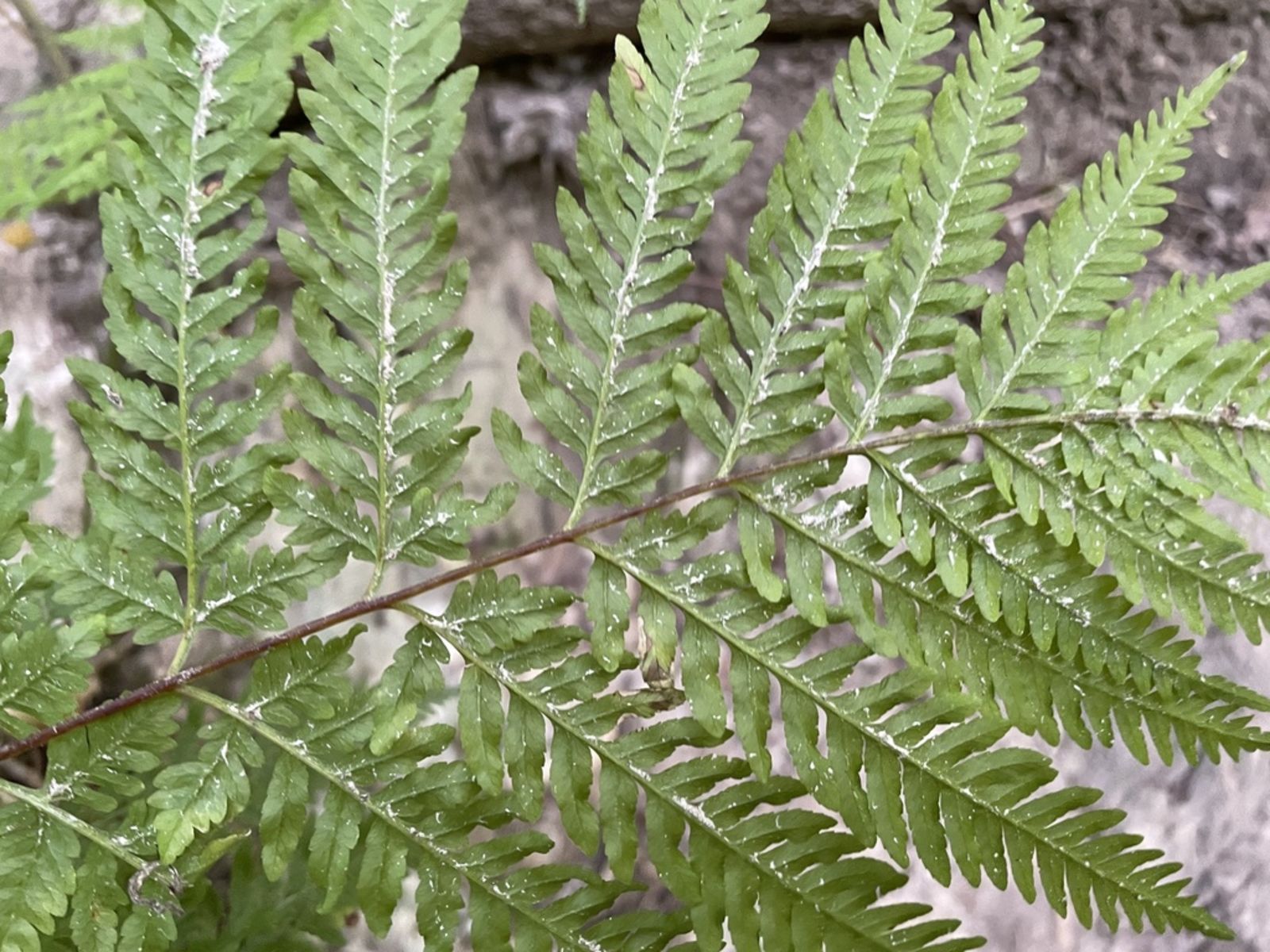Aspidium tremulum
pteris tremula
Also known as: ["Aspidium tremulum","Trembling Fern"]
Overview
A delicate, evergreen fern with arching fronds and a graceful appearance, native to tropical regions.
Benefits & Perks
["shade tolerant","aesthetic foliage","wildlife attractant (bees, butterflies, birds)"]
Botanical Classification
| Phylum: | Tracheophyta |
| Class: | Polypodiopsida |
| Order: | Polypodiales |
| Family: | Pteridaceae |
| Genus: | Pteris |
| Botanical Name: | Pteris tremula |
Plant Characteristics
Basic Information
- Category: Leaf Plants
- Suitable Location: indoor pot in a humid room with indirect light
- Suitable For:
- Is Weed: No
- Allergenicity: low
Environmental Needs
- Climate: {"temperatureRange":"10–30°C"}
- Hardiness: {"zones":"9–11"}
- Misting: every 2–3 days to maintain humidity, especially in dry environments
- Drainage: Fast-draining to prevent waterlogging.
- Soil Type: Well-draining, rich, organic potting mix with peat or coco coir.
Maintenance Level
- Maintenance Level: moderate
- Toughness Level: moderate
- Pruning Frequency: As needed; typically every 6–12 months or when fronds decline.
- Pruning Intensity: Light to moderate; remove only dead or yellowing fronds unless severely overgrown.
Care Details
Ideal Sunlight Coverage:
Bright indirect light for 6–8 hours daily; tolerate lower light but may grow slower.
Sunlight Tolerance Tips:
Acclimate gradually to brighter light; avoid direct sun to prevent scorching; adjust placement based on indoor/outdoor conditions.
Care Requirements
Care Difficulty
easymoderate
Sunlight
partial shade to filtered light
Rotate plant for even growth; use sheer curtains to filter direct light; monitor for light stress.
Watering
every 7–10 days, allowing soil to dry slightly between waterings
Water deeply but infrequently; ensure soil dries between waterings; avoid waterlogging.
Soil
well-draining, peat-based potting mix
pH: Acidic to neutral (pH 5.5–7.0).
Ensure pots have drainage holes; avoid heavy clay soils; check moisture before watering.
Temperature
Prefers 60–75°F (15–24°C); tolerates 50–85°F (10–29°C); avoid sudden temperature fluctuations.
Avoid placing near drafty windows; maintain stable temperatures; monitor for stress signs.
Fertilizing
every 4–6 weeks during active growth (spring and summer)
Dilute fertilizer to prevent burn; fertilize only when actively growing; flush soil occasionally to prevent salt buildup.
Propagation
Methods
Division or spores; division is more reliable for home growers.
Step-by-Step Propagation Guide
- Divide clumps.
- Repot divisions.
- Water lightly.
- Maintain humidity.
- Spores: collect, scatter on medium, keep moist and warm.
Best Time: Spring or early summer when the plant is actively growing.
Environment
High humidity (70–90%), warm temperatures (70–75°F/21–24°C), indirect light.
Medium
Peat-based mix with perlite or sand for spores; well-draining soil for division.
Hormone
Not necessary for division; optional for spores to encourage germination.
Timeline
Division: immediate establishment; spores: 1–3 months to germinate, 6–12 months to mature.
Tools Needed
Clean knife or shears, pots, humidity dome, misting bottle.
Quick Tips
Use sterile tools; maintain consistent moisture; provide bottom heat for spores.
Pruning & Repotting
Pruning Guide
Method
Snip individual fronds at the base with clean, sharp tools; avoid cutting into healthy growth.
Pruning Plan
Remove dead or damaged fronds to maintain appearance and health; occasional shaping to control size.
Tools
Pruning shears, scissors, or sharp knife.
Checklist
Check for dead/damaged fronds; use clean tools; cut close to base; dispose of clippings.
Repotting Guide
Best Season
Spring, before the active growing season begins.
Pot Size
One size larger pot; ensure it has drainage holes.
Method
Remove plant gently; trim roots if necessary; place in new pot with fresh soil; water lightly.
Suggestions
Repot every 2–3 years or when roots fill the pot; beneficial for growth and health.
Checklist
Check root bound status; prepare new pot; use fresh soil; water after repotting.
Advanced Care Tips
Watering Mastery
Watering Checklist
Check soil moisture; water deeply; ensure drainage; adjust for season.
How to Apply Water Properly
Water directly at the root zone until water drains from the bottom; avoid wetting the foliage; ensure proper drainage to prevent standing water.
Watering Schedule Tips
Water thoroughly when the top 1–2 inches of soil are dry; reduce frequency in winter to prevent root rot.
Soil Improvement
Add perlite or sand for drainage; incorporate organic matter like compost for fertility.
Temperature Stress Management
Signs of Temperature Issues
Yellowing leaves, stunted growth, or browning leaf tips.
Cold Stress
Slows growth, causes leaf discoloration, and may lead to root damage in prolonged cold.
Solution: Move to a warmer location; insulate pots; avoid drafty areas; use a space heater if necessary.
Hot Stress
Wilting, leaf scorch, or dehydration even if soil is moist due to rapid transpiration.
Solution: Increase humidity; provide shade; water more frequently; use shade cloth outdoors.
Fertilizing Guide
Fertilizing Checklist
Check growth phase; dilute fertilizer; apply to moist soil; avoid winter feeding.
Fertilizing Method
Use balanced liquid fertilizer diluted to half strength every 4–6 weeks during growing season (spring/summer); avoid fertilizing in winter.
Common Problems & Solutions
Toxicity Warning
Cats
Non-toxicPteris tremula is not toxic to cats. The plant does not contain any known substances that are harmful to felines.
⚡ Toxic If:
if eaten
Dogs
Non-toxicPteris tremula is not toxic to dogs. There are no known toxic compounds in this plant that would cause harm to canines.
⚡ Toxic If:
if eaten
Humans
Non-toxicPteris tremula is not known to produce any toxic compounds that would cause adverse effects in humans. The plant is generally considered safe for human contact and consumption.
⚡ Toxic If:
if eaten
Frequently Asked Questions
Q: How often should I water Pteris tremula?
A: Water when the top inch of soil feels dry, ensuring the pot has good drainage to prevent root rot.
Q: Does Pteris tremula require direct sunlight?
A: No, it thrives in indirect light or partial shade, making it ideal for indoor settings away from direct sun.
Q: Is Pteris tremula toxic to pets?
A: No, it is non-toxic to dogs and cats, making it a safe choice for households with pets.
Quick Reference
| Family: | Pteridaceae |
| Care: | easy |
| Light: | partial shade to filtered ligh |
| Water: | every 7–10 days, allowing so |
Get Expert Care Tips
Download the Plantious app for personalized care reminders and plant identification!
Google Play App Store








